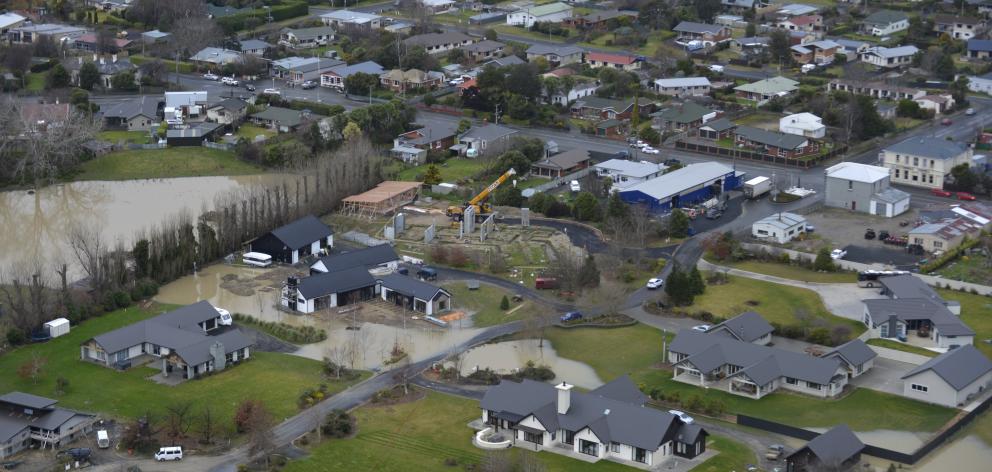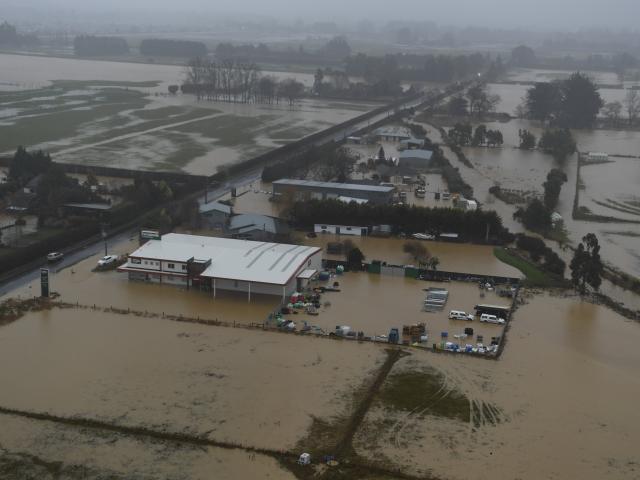
When Dunedin flooded two weeks ago, one of the more jarring images was of recently built houses and businesses inundated by muddy water.
In Outram, the Anzac Court subdivision, granted consent in 2008, was left partly under water.
In Dukes Rd staff at the Farmlands building, granted consent in 2014, were sweeping mud and water from the rural supplies outlet the day after the flood.
They were just two areas where more modern buildings were affected by flooding.
Questions were quickly asked about how that could be, when the city is well aware of the area’s propensity to flood, and the matter is almost always raised during the resource consent process.
In the days after the flood, Mayor Dave Cull told media he would review areas marked for subdivision.
This week, council chief executive Sue Bidrose said there were areas of low-lying housing the council needed to think about, as well as development on the Taieri "that is certainly stretching our infrastructure".

It would try to ascertain where houses were flooded, what that meant for council infrastructure, and what the council needed to do.
Dr Bidrose said the future of where people could build subdivisions, however, was something for the second-generation district plan (2GP).
The 2GP sets out rules for property zoning and development in the city, and is the document council staff refer to when residents or businesses apply for resource consent.
It is in a final deliberation stage after five years of development, and is expected to be approved this year.
"The 2GP is going to set out what can and what can’t be built," Dr Bidrose said.
Both the consent for Anzac Court and Farmlands included discussion on the flooding hazards, based on the Otago Regional Council’s hazards database.
Both were given consent with conditions and advice in terms of building platform height and other mitigation measures. City development manager Anna Johnson said yesterday the 2GP had added new hazard provisions that would change what could be built where.
Flooding hazards had been categorised into levels one, two and three, with one being the most significant hazard, and three the least significant.
For areas marked hazard one and two, resource consent would be needed to undertake residential activity.
In hazard one areas such activity would be a non-complying activity, "a difficult consent to get".
Dr Johnson said the ORC had asked through the 2GP process for some areas of hazard one to be given an even stricter status.
That would mean residential activity would be prohibited in ponding areas and flood-ways, areas designed to fill with water in flood events.
That was being considered.
She said in hazard two areas, which covered part of Outram, developers would be required to apply for a discretionary consent.
That could require a notified consent with public input and hearings, although that would be on a case by case basis.
Dr Johnson said the 2GP would also change things for developers wanting to change the zoning of land, for instance getting a rural zoning changed to residential zoning, so a subdivision could be built.
The new hazard classifications would come into play when zone changes were requested.
"Having that extra information we now have in the 2GP would make those types of subdivisions more difficult to get.
"Certainly, we’ve got a higher level of information than they had in the past."
Asked if the new rules would make thing more difficult for developers generally, she said: "It depends."
"If it’s rural land, and somebody’s trying to convert it to residential, that would certainly be much more difficult to do with a hazard one or hazard two classification.
"It fundamentally questions whether that’s an appropriate zoning or use of that land."
Resource consents manager Alan Worthington said consents for the likes of Anzac Court and Farmlands always had input from engineers, both the applicant’s and the council’s.
The consent documents for Anzac Court show the developer’s consultant, Opus, recommended designing three of the lots to allow for a one-in-50-year flood, while the council’s consultant engineers, MWH, responded the subdivision should be designed to a one-in-100-year standard.
Opus "expressed concern at the overly conservative approach", as the Building Code and the council’s code of subdivision sought only to provide protection against a one-in-50-year flood event.
It was eventually agreed at a meeting between MWH and Opus engineers that a standard higher than one-in-50-years was acceptable.
Mr Worthington said the result was somewhere in between the two.
That resulted in building platform heights being set at 7.65m above sea level for some lots.
It was unclear what level the recent flood had been — one-in-50 or one-in-100 — and the ORC said yesterday that would not be clear until later this month.
However, Mr Worthington said: "It was a big rain event."
"The river level was lower than the 1980 flood, but the volume was greater.
"In some ways it was bigger, in some ways it was smaller."
Asked if the rules needed to be changed, Mr Worthington said: "I think the 2GP is the answer to that.
"It’s taking a forward look.
"It’s a whole new plan compared to the plan we were using in the 2000s."












